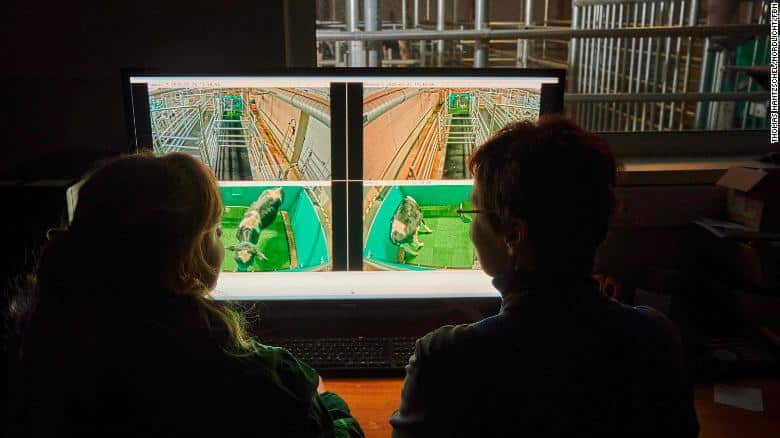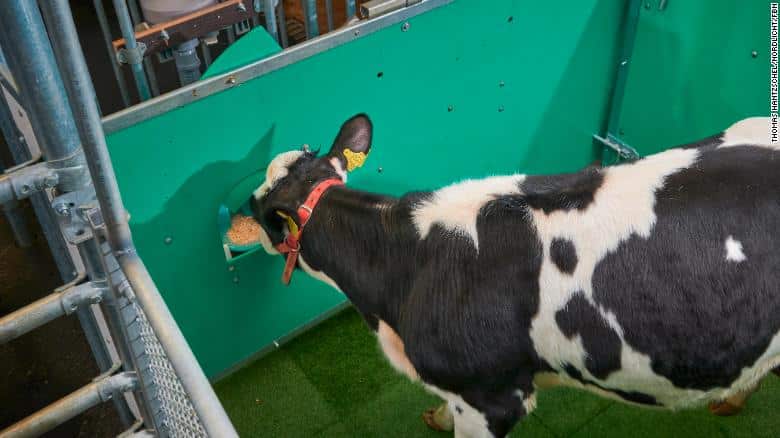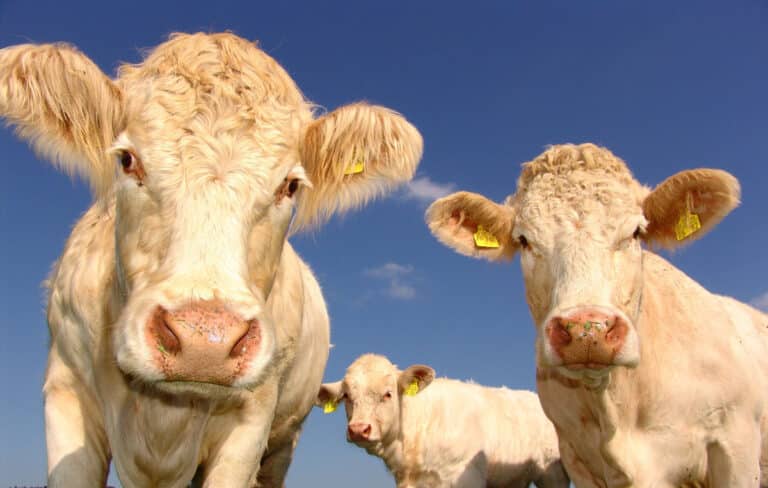Scientists are toilet-training cows to combat climate change
It’s your fever dream but also a coveted way to tackle climate change. Collaborating with Germany’s Federal Research Institute for Animal Health and Research Institute for Farm Animal Biology (FBN), a group of researchers have found a solution to reduce the environmental damage caused by livestock waste: toilet-training cows.
Farmed cattle are known for their notorious contribution to greenhouse gas emissions—producing roughly 66 to 88 pounds of faeces and 8 gallons of urine each day. When cows are kept outdoors, as in the case of New Zealand and Australia where they are free to roam and relieve themselves at their own leisure, the nitrogen from their urine breaks down into the soil. This results in the production of two toxic substances: nitrate and nitrous oxide.
While nitrate from these urine patches bleeds into lakes, rivers and aquifers, nitrous oxide emits into the environment as a long-lasting greenhouse gas which is 300 times more potent than carbon dioxide. The former pollutes water bodies and contributes to the excessive growth of weeds and toxic algae while the latter accounts for about 12 per cent of New Zealand’s overall greenhouse gas emissions.
On the flip side, when cows are sheltered in barns—like in Europe and North America—the practice results in the production of yet another polluting gas: ammonia. This by-product is produced when the nitrogen from cow urine mixes with faeces on the barn floor. Confining cows in such spaces could also be detrimental to their wellbeing in general. On the quest to strike a balance between their personal health and our planet’s, scientists decided to test and dispel a common myth surrounding cattle.
In a study, published in the peer-reviewed scientific journal Current Biology, researchers proved that cows can be taught how to control their defecation or urination, just like human babies. “Cattle, like many other animals or farm animals, are quite clever and they can learn a lot. Why shouldn’t they be able to learn how to use a toilet?” said Doctor Jan Langbein, an animal psychologist at the FBN, in a press release. In their project, funded by the Volkswagen Foundation, the scientists applied principles from behavioural psychology to train young cattle to urinate in a particular place using a procedure called ‘backward chaining’.

In phase one, a total of 16 calves were confined in a latrine pen and rewarded with an electrolyte mixture or crushed barley when they urinated. This established the pen as an ‘ideal’ place to excrete. The calves were then placed in an alley outside and rewarded for entering the pen and urinating in the same place. If they began excreting in the alley, they were discouraged with a ‘deterrent’. “We first used in-ear headphones and we played a very nasty sound whenever they urinated outside,” Langbein said in the press release. “We thought this would punish the animals, but they didn’t care. Ultimately, a splash of water worked well as a gentle deterrent.”
The calves were trained in this procedure—which the scientists have conveniently named “MooLoo training”—for 45 minutes every other day. After 15 days of training, 11 out of the 16 calves involved in the experiment were successfully “MooLoo trained.” Majority of them also learned the skill within 20 to 25 urinations—quicker than the time it usually takes to toilet train three to four year-old children.
“In a few years all cows will go to a toilet,” Langbein summed up. However, scaling this method for large-scale application in the agricultural industry involves two main challenges, which the scientists are planning to focus on in the coming stages of the project. First up is the automatic detection of urination in the latrine pen to deliver treats without human intervention. Optimal locations and number of latrine pens are the next hurdle. The latter is a particularly challenging issue in countries like New Zealand, where cattle spend most of their time in open paddocks rather than in barns.

“Part of our future research will require understanding how far cattle are willing to walk to use a pen,” the researchers wrote in a column for The Conversation. “And more needs to be done to understand how to best use this technique with animals in both indoor and outdoor farming contexts.” But what they do know for sure is that the MooLoo technique can significantly reduce the environmental impact of farmed cattle. “The more urine we can capture, the less we’ll need to reduce cattle numbers to meet emissions targets—and the less we’ll have to compromise on the availability of milk, butter, cheese and meat from cattle,” they concluded.
Dinosaurs may have excreted their way into extinction but the odds of history repeating itself is finally at an all-time low.





